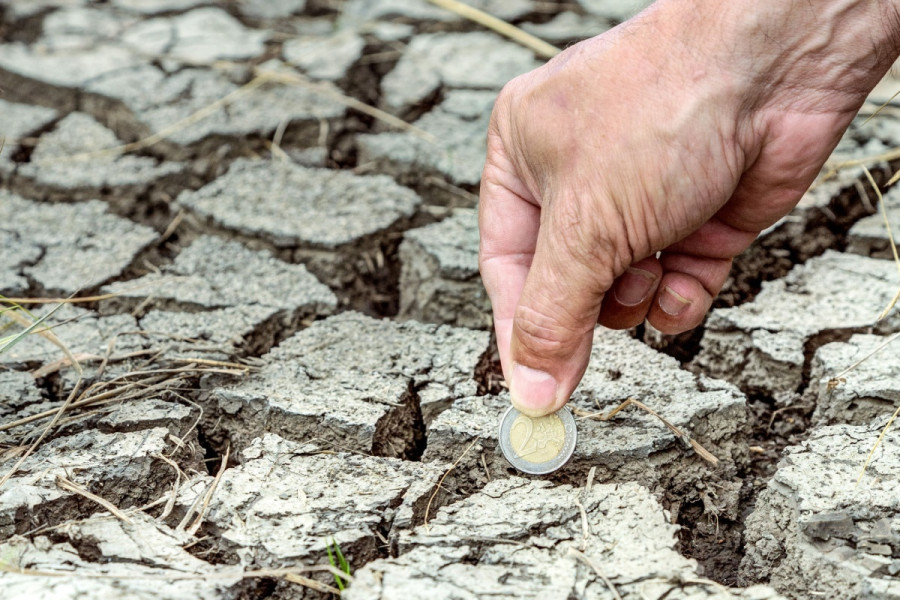Columns
Finance, a fleeting fix for a lasting issue
We are now past the point of voluntarily determined emissions targets and the world faces peril.
Rajeswari Raina
The biggest event of 2024 in the world of climate change negotiations was the COP29 meeting in Azerbaijan, billed as the finance COP. Sugar-coating a pill is one thing. Sugar-coating a slippery slope is quite another. With the world sliding closer to climate catastrophe, the sugar-coat of finance has been set up, including at the latest COP29 meeting, as the cure for all climate ills. This is a dangerous illusion at best.
Research established decades ago that biophysical systems, which includes everything from cells to entire ecosystems, cannot be substituted by capital, meaning money. The relationship between capital (a commodity created by one species: human beings) and biophysical systems is not one of substitutability. It is perhaps a blessing in disguise that the promised financial solutions at COP29 failed to materialise. Once financial ‘solutions’ are presented at a COP meeting, the problem of incomparability and incommensurability arises—financial valuations clash with the biophysical realities of climate change.
There is no shortage of warnings about misguided solutions like the monetisation and marketisation of pollution, such as carbon trading. Yet, few are willing to listen. This deafness has its roots in the conversion of land to natural capital in economics and the economic theory that nature’s inputs can be replaced by finance or manufactured capital. The hardening of this deafness occurred after the 1973 oil crisis, when economics reduced the issue of resource scarcity to one of limited access to finance, expressed in uniform monetary units that supposedly capture all biological resources such as land and labour and physical resources such as coal and oil.
It only took 15 years—from the idea expressed in The Limits to Growth in 1972 to the Brundtland Commission report of the World Commission on Environment and Development (WCED) in 1987—for the narrative on economic growth to shift, from being the driver of unsustainability to being reinstated as central to sustainable development. Since the Paris Agreement of 2015, financial instruments (including the hard-won Loss and Damage Fund at COP27) have increasingly focused on risk management rather than mitigation, or even slowing the pace of carbon emissions.
This represents a global commitment to maintaining the status quo, legitimised by the understanding that poorer countries, affected by extreme weather events and climate impacts, as well as by the extraction of rare earths and minerals needed for the wealthy to access renewable energy, will receive financial support for adaptation. According to the WCED, the poor, who are also polluters, stand to gain from economic growth. The Paris Agreement echoes this commitment to long-term economic growth and sustainable development, reinstating finance as the key mechanism.
The ‘success’ of the Paris Agreement marked a significant turning point in climate governance. It solidified the monetisation of human-induced climate change impacts and reinforced political confidence in finance, both in the developed West and across the globe. The developed countries promised to provide $100 billion annually to help developing countries cope with climate change. Yet, just a few years after the ‘successful’ Paris Agreement, it became clear that these promises were not being fulfilled.
Beyond reinforcing international commitments to fossil fuel use while gradually increasing renewable energy and promoting greenwashing of polluting industries, the agreement placed risk management and climate finance at the forefront as the key tools for governments to address climate change.
Finance allows governments to present themselves as competitive in the global market, channelling investments into their economies and extending their roles beyond mere economic development managers. Not only do developing countries compete with one another for climate finance, but the developed countries who promise finance also use it as a mechanism to transfer polluting industries to countries with weaker environmental regulations.
Finance enables governments to ignore the agency of nature. This approach decouples the economy from its material base and promotes funding for the poor in countries that supply the resources necessary for the developed world to remain developed.
Finance also allows governments to sidestep difficult questions about the root causes of climate change and to embrace the explanation that two major changes have taken place since industrial capital was transferred to developing countries.
The industrial capital of the 1980s has become a small part of the financial capital sector, with high-yielding financial derivatives that allow people to bet on future prices of things now dominating. This shift has given investment banks and insurance companies more influence over traditional public development banks, nudging states and international actors, like the World Bank, to support regulations that favour these new financial actors and grant them greater control over accumulation and global capital flows.
We are now past the point of voluntarily determined emissions targets and the world faces peril. Yet our leaders—both domestic and international—continue to pin their hopes on finance and the ability of insurance companies to support national climate action.
The ‘failure’ of the promised financial solutions at COP29 provides nations and non-governmental organisations with the time and opportunity to explore decentralised, low-carbon alternatives for work and production-consumption relationships that ensure restoration and regeneration of biophysical systems.
—360 info




 9.12°C Kathmandu
9.12°C Kathmandu













%20(1).jpg&w=300&height=200)

